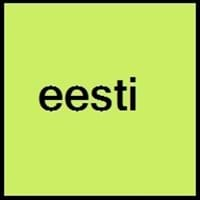Filipino and Estonian
Countries
Philippines
Estonia, European Union
National Language
Philippines
Estonia, Gambia
Second Language
Philippines
Not spoken in any of the countries
Speaking Continents
Asia
Europe
Minority Language
Not spoken in any of the countries
Denmark, Russia, Sweden
Regulated By
Komisyon sa Wikang Filipino
Institute of the Estonian Language
Interesting Facts
- "Filipino" was officially declared as national language by the constitution in 1987.
- "Filipino" is the official name of Tagalog, or synonym of it.
- Estonian language is considered to be powerful symbol of Estonian identity and culture.
- Estonian language has adopted many words with Finnish language.
Similar To
Tagalog Language
Finnish
Derived From
Spanish Language
Not Available
Alphabets in
Filipino-Alphabets.jpg#200
Estonian-Alphabets.jpg#200
Writing Direction
Not Available
Left-To-Right, Horizontal
How Are You?
Kumusta
kuidas sul läheb
Good Night
magandang gabi
Head ööd
Good Evening
Magandang gabi
Tere õhtust
Good Afternoon
Magandang hapon
Tere päevast
Good Morning
Magandang umaga
Tere hommikust
Sorry
pinagsisisihan
Vabandust
I Love You
Mahal kita
ma armastan sind
Excuse Me
patawarin ninyo ako
Vabandage
Dialect 1
Bikol
Keskmurre
Where They Speak
Philippines
Gabon, Northeastern coast of Estonia
Dialect 2
Hiligaynon
Tartu
Where They Speak
Philippines
Georgia, South Estonia
How Many People Speak
Not Available
Where They Speak
Philippines
France, Northwestern shore of Lake Peipsi.
How Many People Speak
Not Available
Speaking Population
Not Available
Not Available
Second Language Speakers
Not Available
Native Name
filipino
eesti keel
Alternative Names
Pilipino
Eesti keel
French Name
filipino; pilipino
estonien
German Name
Pilipino
Estnisch
Pronunciation
[ˌfɪl.ɪˈpiː.no]
Not Available
Ethnicity
Not Available
Estonians
Origin
16th Century
13th century
Language Family
Austronesian Family
Uralic Family
Subgroup
Not Available
Finno-Ugric
Branch
Not Available
Finnic
Early Forms
No early forms
No early forms
Standard Forms
Filipino
Estonian
Signed Forms
Not Available
Estonian Sign Language
Scope
Individual
Macrolanguage
ISO 639 1
No Data Available
et
ISO 639 6
Not Available
Not Available
Glottocode
fili1244
esto1258
Linguasphere
No Data Available
No data available
Language Type
Living
Living
Language Linguistic Typology
Not Available
Subject-Verb-Object
Language Morphological Typology
Not Available
Agglutinative
All Filipino and Estonian Dialects
Most languages have dialects where each dialect differ from other dialect with respect to grammar and vocabulary. Here you will get to know all Filipino and Estonian dialects. Various dialects of Filipino and Estonian language differ in their pronunciations and words. Dialects of Filipino are spoken in different Filipino Speaking Countries whereas Estonian Dialects are spoken in different Estonian speaking countries. Also the number of people speaking Filipino vs Estonian Dialects varies from few thousands to many millions. Some of the Filipino dialects include: Bikol, Hiligaynon. Estonian dialects include: Keskmurre , Tartu. Also learn about dialects in South American Languages and North American Languages.
Filipino and Estonian Speaking population
Filipino and Estonian speaking population is one of the factors based on which Filipino and Estonian languages can be compared. The total count of Filipino and Estonian Speaking population in percentage is also given. The percentage of people speaking Filipino language is Not Available whereas the percentage of people speaking Estonian language is Not Available. When we compare the speaking population of any two languages we get to know which of two languages is more popular. Find more details about how many people speak Filipino and Estonian on Filipino vs Estonian where you will get native speakers, speaking population in percentage and native names.
Filipino and Estonian Language Codes
Filipino and Estonian language codes are used in those applications where using language names are tedious. Filipino and Estonian Language Codes include all the international language codes, glottocodes and linguasphere.





